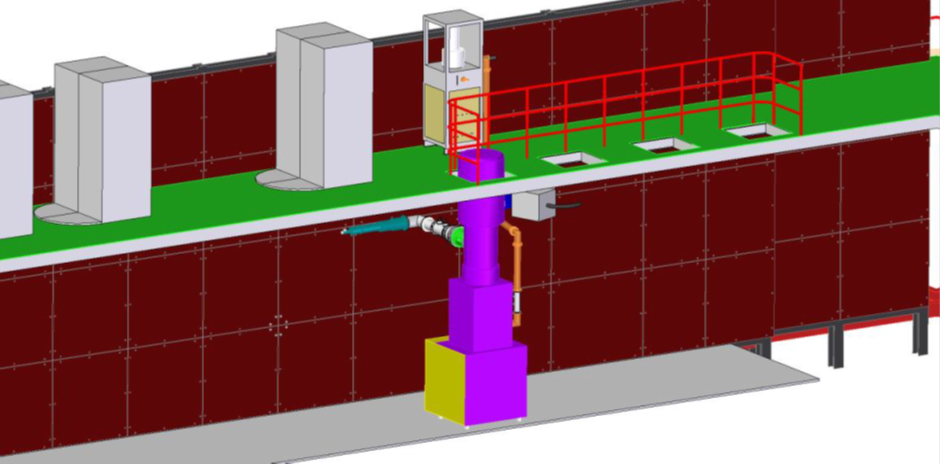![]() RF drive system for MICE installed at the ICTF
RF drive system for MICE installed at the ICTF
by Kevin Ronald, (University of Strathclyde), Andrew Moss (Daresbury Lab), Tim Stanley (Rutherford Appleton Lab) for the MICE Collaboration

Fig. 1: Installation of the triode amplifier, visible are (a) the 3” feedline from the preamplifier on the mezzanine above, (b) the preamplifier test load, (c) the final stage amplifier assembly and (d) the 6” output line from the final stage. Image credit: TIARA/MICE.
Ionisation cooling is required to reduce the emittance of a muon beam rapidly for application in future accelerators for neutrino factories and muon colliders. The first RF power amplifier, developed under TIARA Work Package 7, by Daresbury Laboratory working with the Rutherford Appleton Laboratory (RAL), the University of Strathclyde and Imperial College has been installed and tested at the Ionisation cooling Test Facility (ICTF).

Fig 2: Engineering model illustrating the test installation of the 1st Amplifier system in the RF power station at the ICTF, the preamplifier tetrode (a), SSPA and Source are on the mezzanine with the power supplies (b), the tall triode final stage (c) is installed between the main floor and the mezzanine. Image credit: TIARA/MICE.
The first of the four compact amplifiers for the Muon Ionisation Cooling Experiment (MICE), which recently achieved the required performance of 2MW peak power in 1ms pulses at 1Hz has now been installed in the Ionisation Cooling Test Facility at RAL. This required the establishment of all necessary services in the limited space available for the RF power stations. The amplifier has been tested to the limits of the available RF loads and exhibited the same performance characteristics as achieved in the tests previously conducted at Daresbury. This is a major step in preparing the infrastructure for MICE. Through synergy with a US NSF-MRI programme at Mississippi, the components required for the distribution network developed under the TIARA project have been procured, and some parts used in the recent tests. The support of TIARA, the UK STFC, the US NSF and e2v technologies is gratefully acknowledged.
